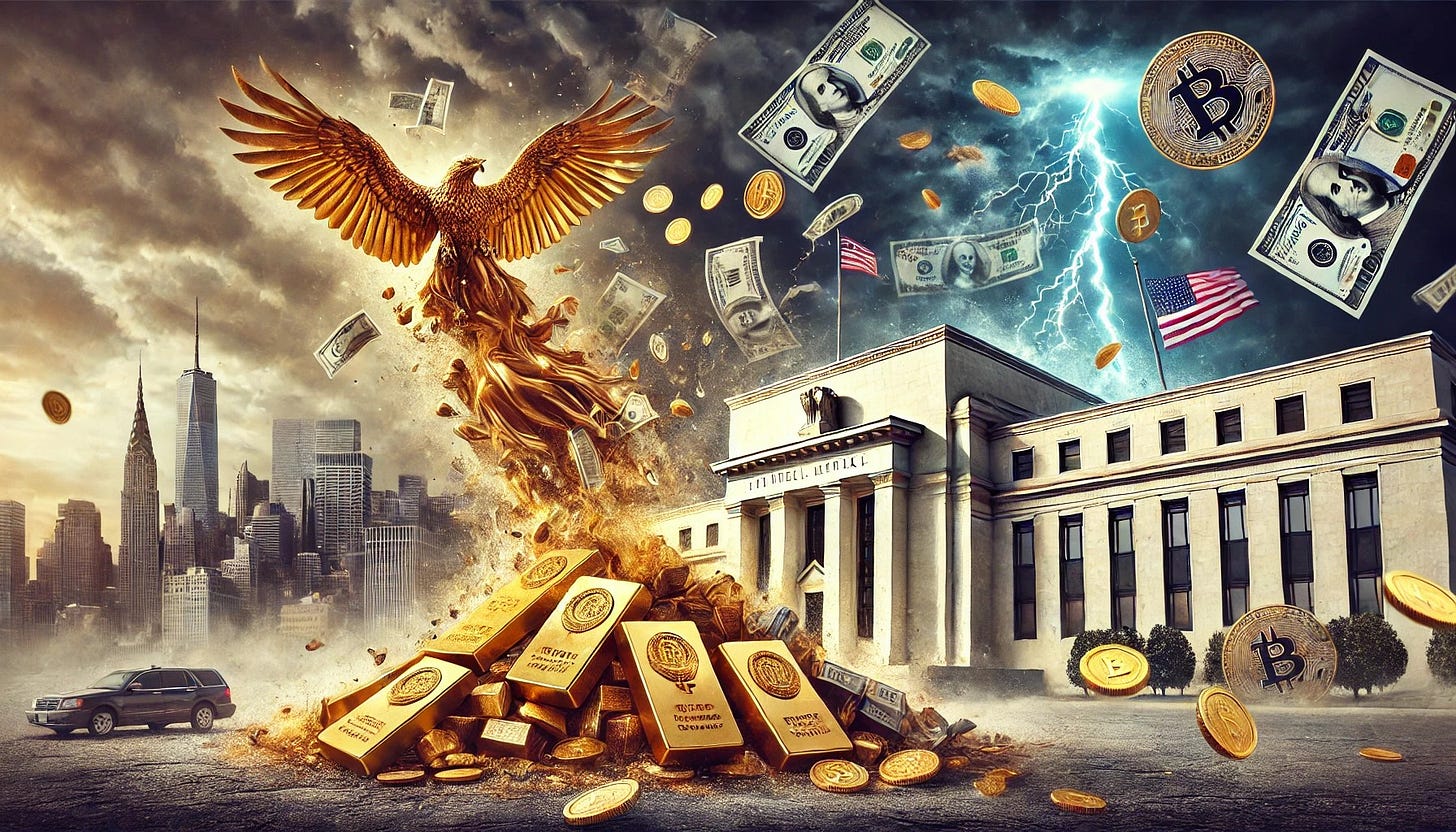The Rise and Fall of Fiat Currency: Is America Returning to Real Money?
Death of the old money and the Federal Reserve
For over a century, the U.S. dollar has reigned as the world's dominant currency. But its foundation—once rooted in tangible assets—has eroded into a system of fiat currency, backed only by faith in government promises. Today, with inflation skyrocketing and economic stability in question, a major shift could be underway: the Trump administration appears to be moving toward a hybrid monetary policy that could reintroduce real assets, including Bitcoin and gold, as key pillars of the financial system.
The Fiat Experiment: A Century of Inflation and Instability
Fiat currency—money not backed by a physical commodity like gold or silver—has a historically short lifespan. Throughout history, all fiat currencies have eventually collapsed due to inflation, government mismanagement, and loss of public trust. The U.S. dollar, once tethered to gold, was removed from the gold standard in 1971 under President Richard Nixon. Since then, its value has been dictated by market demand and federal monetary policy.
Key Moments in the History of the U.S. Dollar
1914 – The Birth of the Modern U.S. Dollar
Following the establishment of the Federal Reserve in 1913, the first official Federal Reserve Notes were printed. At the time, the dollar was still backed by gold, ensuring that each note represented a tangible asset.1933 – The First Major Devaluation
Amidst the Great Depression, President Franklin D. Roosevelt issued Executive Order 6102, forcing Americans to turn in their gold in exchange for dollars. The government then revalued gold from $21 to $35 per ounce, instantly devaluing the dollar by nearly 50%.1944 – The Bretton Woods Agreement
In the aftermath of World War II, the U.S. dollar was cemented as the world's reserve currency, with other nations pegging their currencies to the dollar, which was still backed by gold.1971 – Nixon Ends the Gold Standard
Facing economic pressures, President Nixon severed the dollar’s ties to gold, transitioning the U.S. monetary system to pure fiat currency. The dollar was no longer backed by anything tangible—only government assurances.1974 – The Petrodollar System
To maintain global demand for the U.S. dollar, the Nixon administration struck a deal with Saudi Arabia: in exchange for U.S. military protection, the Saudis agreed to sell oil exclusively in dollars. This arrangement ensured that every nation needed U.S. dollars to buy oil, artificially sustaining the currency’s value.2023 – The Fiat System Cracks
In recent years, countries like China, Russia, and Brazil have begun trading oil in their own currencies, signaling cracks in the petrodollar system. Inflation in the U.S. has soared, and confidence in the dollar has weakened.
Trump’s Plan: A Hybrid Monetary Future?
Rumors have been swirling that the Trump administration aims to shift America away from the failing fiat system and return to a more stable, asset-backed monetary policy. But unlike past gold standards, the new system may incorporate a hybrid approach, integrating Bitcoin and real-world assets.
What This Could Mean for the U.S. Economy
Gold: A Return to Stability?
If the U.S. does indeed move back to gold-backed currency, a critical question emerges: does Fort Knox still hold enough gold to support such a transition? While official reports claim it remains secure, many skeptics believe much of the nation’s gold reserves have been depleted or leased out over decades.Bitcoin: The Digital Gold?
Bitcoin, often referred to as "digital gold," presents an alternative to traditional fiat currency. Unlike the dollar, Bitcoin has a fixed supply of 21 million coins, making it resistant to inflation. The Trump administration has hinted at recognizing Bitcoin’s value as a reserve asset, potentially integrating it into a new monetary framework.Tangible Assets and Wealth Preservation
Beyond gold and Bitcoin, real assets like land, commodities, and even livestock (as seen in some survivalist investment strategies) may play a growing role in financial security. Diversification into tangible assets could become a hedge against the volatility of fiat currency.
Is This the End of the Fiat Dollar?
For over 50 years, the U.S. dollar has survived as a fiat currency, sustained by global trade and government intervention. However, with inflation eroding its purchasing power and other nations moving away from dollar-based trade, a financial reckoning may be near. If the Trump administration successfully implements a new hybrid monetary policy, America could see a historic shift—one that moves us back toward real money, protecting wealth from the endless cycle of inflation.
Whether or not gold remains in Fort Knox, one thing is certain: the fiat system is on borrowed time. The next chapter of U.S. monetary policy may be one of the most significant economic transformations in modern history.




I kinda want to see a live feed when they open the vault to audit Fort Knox but I'm terrified that it will be empty and then the whole world will know we're flat broke. Shades of Geraldo Rivera and Capone's vault.